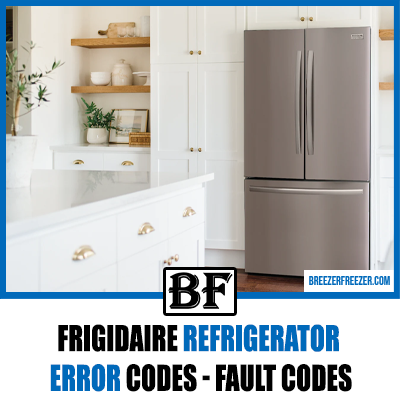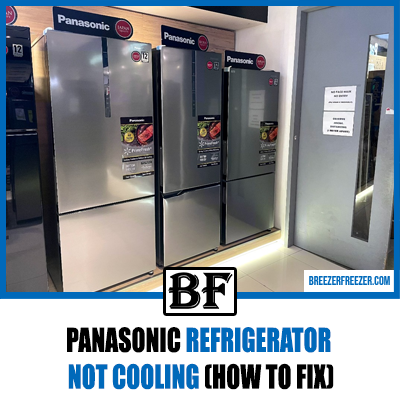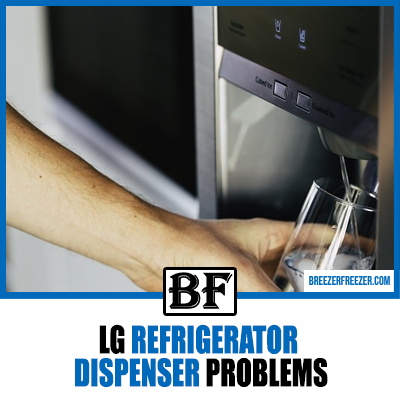A Short History Of Refrigerators Evolution
Before the invention of the refrigerator, drinks were chilled and food preserved the natural way. Water runoff from melting snow on the mountains would be used to chill drinks and food could be kept in caves in the mountains to keep it fresh. During winter in Asia, water pots with water would be put outside overnight to make ice which would then be used to preserve food. It was obviously a very laborious task which needed to be improved.
What led to the development of the modern refrigerator?
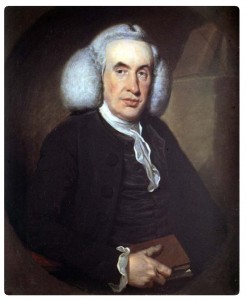
There is not a lot of information about the development of the technology that led to the modern refrigerator but it is recorded that the earliest development of an artificial way of refrigeration can be traced down to the seventeen hundreds and to a Scottish professor named William Cullen. In 1755, Cullen invented a machine that evaporated liquids in a vacuum, this was the beginning of the evolution of refrigerators.
Who invented the first refrigerator and when?
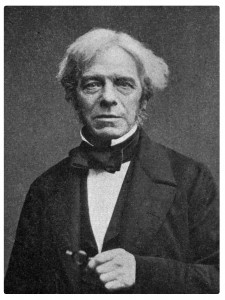
Oliver Evans is credited as the inventor of the first refrigerator. In 1805, he used the technology described and created by Professor Cullen to come up with a vapor compression system which could be used to make ice using ether under vacuum. His work was followed up by Michael Faraday who in 1820 managed to liquefy ammonia and other gasses using high pressure and low temperature. In 1834, Jacob Perkins, an American working in Great Britain invented an even better refrigeration system which was a vapor compressing refrigerator system. Unlike the earlier inventions, this one was able to operate continuously.
How did the first refrigerators look like?
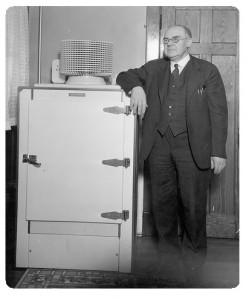
They were a far cry from what we know today as refrigerators. The first refrigerators were more like machines in a factory with big cylinders, collection boxes. The inventors, at that time, were more concern with the process rather than the design.
How long was it before refrigerators were sold to the public?
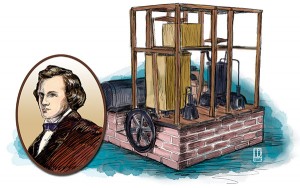
It took about 45 years from the time Oliver Evans invented the first refrigerator to the time that a commercially viable refrigerator was invented. James Harrison in 1856 patented the first practical vapor compressing refrigerator. This refrigerator could use both ammonia and alcohol. Earlier in 1851 he had built an ice machine which was stationed at Barwon River. In 1854, he invented the first commercial refrigerator that was making ice for selling. Harrison started selling his compressing machine to breweries and meat processing companies. It is important, however, to mention that John Gorrie had earlier built a prototype for commercial use in America, but it was a failure.
How did refrigerators reach households?

First of all you should know that households already had non mechanical refrigerators which were known as iceboxes.These ice boxes were made from mahogany on the outside and tin or zinc on the inside. They used ice to keep food fresh. With the invention of mechanical refrigerators, it was now only a matter of time. In 1913, Fred Wolf invented the first domestic refrigerator which was an ice box and a mechanical unit. Earlier domestic refrigerators were actually very big and part of the unit had to be stored in the basement and the other unit for keeping the food cold would be placed in the kitchen.
In 1914 Nathaniel Wales then came up with a more practical refrigerator that had an electrical system which was developed further into the Kelvinator.
What is the Kelvinator?
The Kelvinator is a brand of refrigerators manufactured by Electrolux. This was also one of the first modern refrigerators which was developed by Nathaniel Wales to run on electricity. All modern domestic refrigerators have their roots in the Kelvinator.

The first electric refrigerators in the 1920s and 1930s
The introduction of the first electric refrigerators in the 1920s and 1930s marked a significant change in the way people stored and preserved their food. Prior to that, ice boxes were the most common method of refrigeration, which relied on ice to keep food cold. Electric refrigerators, however, used a compressor and a refrigerant to create a cooling effect, making them more efficient and convenient.
The first electric refrigerators were large and expensive, and primarily used in commercial settings such as grocery stores and restaurants. As technology and production methods improved, electric refrigerators became more affordable and accessible to the average household.
The widespread adoption of electric refrigeration in the 1920s and 1930s changed the way people lived and ate. It allowed for the preservation of food for longer periods of time, made it possible to store perishable foods like meat and dairy, and opened the door for new food choices and culinary possibilities.
The introduction of the first electric refrigerators in the 1920s and 1930s marked a significant change in the way people stored and preserved their food. It was more efficient and convenient than the traditional ice-boxes and opened the door for new food choices and culinary possibilities.
Widespread adoption of refrigerators
The widespread adoption of refrigerators in the post-World War II era was a result of the increased affordability and improved technology. After the war, many people moved to the suburbs and the demand for refrigerators increased as more households had more space and could afford to purchase one.
The development of the modern refrigerator also contributed to its widespread adoption. Before the 1950s, refrigerators were primarily used for preserving food and were large and expensive. But with the introduction of more compact, affordable and energy efficient models, refrigeration became more accessible to a wider range of households.
The introduction of frost-free refrigerators, automatic defrost, and more energy efficient models led to even more widespread adoption of refrigerators. These advancements in technology made refrigeration more convenient, efficient, and affordable for the average consumer.
The widespread adoption of refrigerators in the post-World War II era was a result of increased affordability and improved technology. The development of the modern refrigerator made it more convenient, efficient, and accessible to a wider range of households.
Advancements in technology
Advancements in technology have led to the development of frost-free refrigerators, which eliminates the need for manual defrosting. This is achieved by using a small heating element to melt any ice that forms on the cooling coils. This not only saves time and effort, but it also helps to keep the fridge running more efficiently.
Another advancement in technology is the use of alternative refrigerants. Traditional refrigerants, such as Freon, have been phased out due to their ozone-depleting properties. In their place, alternative refrigerants such as R-134a and R-600a have been developed. These refrigerants have a lower environmental impact and are more energy efficient.
Furthermore, the development of smart refrigerators is another technological advance in the refrigeration industry. These refrigerators are equipped with internet connectivity and allow users to control and monitor the fridge remotely using a smartphone or other device. They can also provide alerts for things such as when the door is left open or when the temperature is too high.
Overall, advancements in technology have led to the development of more efficient and environmentally friendly refrigeration options that make life easier for users.
The energy efficiency and environmental impacts of refrigerators
Refrigerators are one of the most energy-consuming appliances in a household, and their energy efficiency can have a significant impact on the environment. Energy-efficient refrigerators use less electricity, which can help to reduce greenhouse gas emissions and lower your energy bills.
The Environmental Protection Agency (EPA) has established Energy Star program, which helps consumers identify the most energy-efficient refrigerators. Refrigerators that have earned the Energy Star label have met the EPA’s criteria for energy efficiency, which are designed to be more stringent than the federal standards.
Another way to reduce the environmental impact of refrigeration is to choose a fridge that uses natural refrigerants such as CO2, Ammonia and Hydrocarbons instead of traditional refrigerants like HFCs and HCFCs. These natural refrigerants have a lower global warming potential and are better for the environment.
In addition to choosing energy-efficient and environmentally friendly refrigerators, it’s also important to properly maintain your fridge and use it efficiently to reduce its environmental impact. This includes cleaning the coils, keeping the door seal tight, and ensuring that the temperature is set correctly.
The future of refrigeration, smart refrigerators and alternative cooling methods
The future of refrigeration looks promising with the advancements in technology. One trend that is becoming increasingly popular is the use of smart refrigerators. These refrigerators are equipped with internet connectivity and allow users to control and monitor the fridge remotely using a smartphone or other device. They can also provide alerts for things such as when the door is left open or when the temperature is too high.
Another trend that is gaining popularity is the use of alternative cooling methods. For example, vacuum insulated panels (VIPs) are becoming more widely used in refrigeration. They work by creating a vacuum-sealed space between two panels, which helps to keep the inside of the fridge at a consistent temperature. This can lead to significant energy savings as well as a longer lifespan for the fridge.
Lastly, the use of natural refrigerants such as CO2, Ammonia and Hydrocarbons is also gaining popularity as they are more environmentally friendly and energy efficient than traditional refrigerants. This can help to reduce the carbon footprint of refrigeration and make it more sustainable for the future.
Overall, the future of refrigeration looks promising with the advancements in technology and the use of alternative cooling methods.

